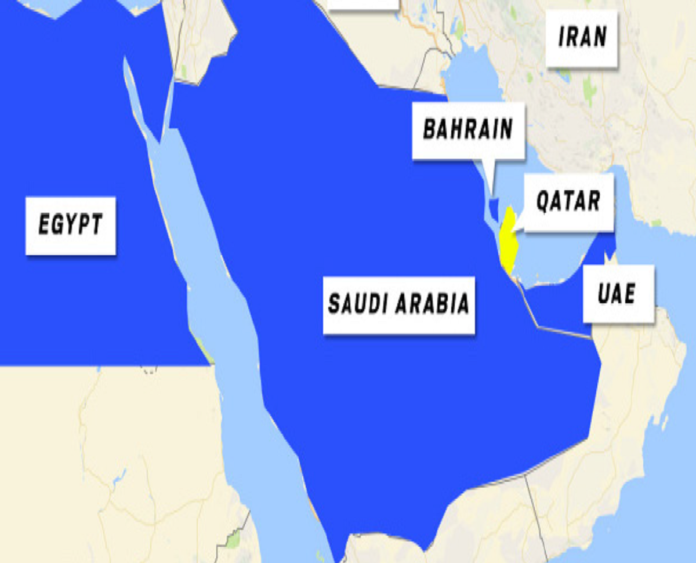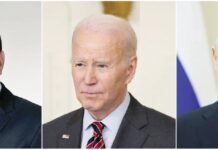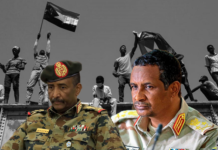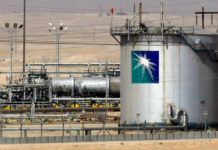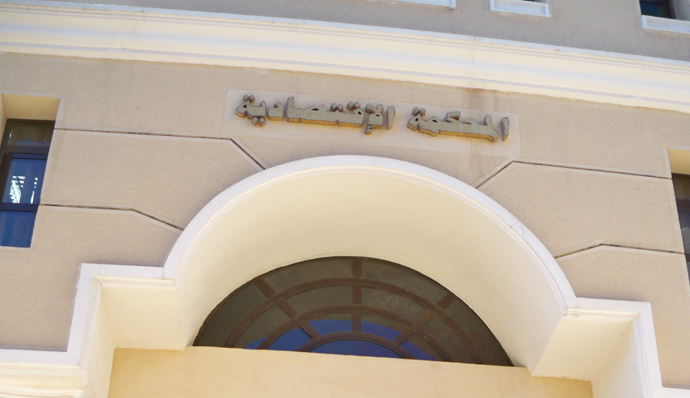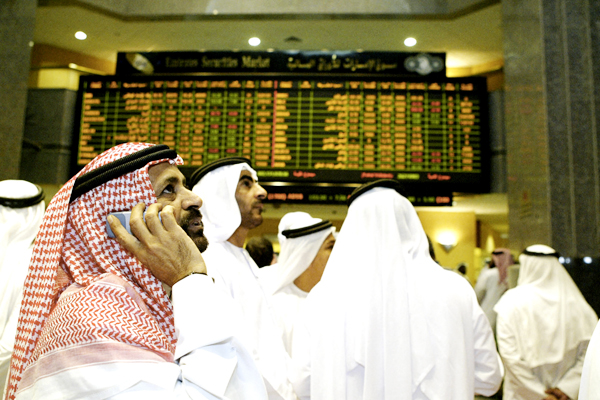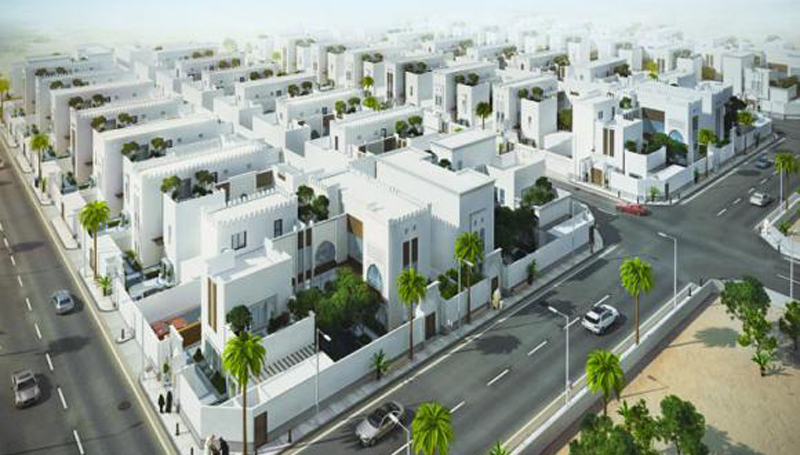Qatar is one of the richest countries in the world with the smallest size and population, yet with one of the largest debts.
Qatar built its wealth from the massive gas discoveries that started in the mid-1990s, announcing the country as the third largest gas reserves and second largest gas exporter in the world.
Gas represents 90% of the country’s commercial exports; 70% of budget revenues and 60% of GDP. In light of these figures, the economy is strongly dependent on the gas sector on which the country’s modern state was built.
Since the late 1990s, Doha has established a strategic cooperation with four countries who receive 90% of the country’s exported gas; South Korea, Japan, India and China.
Qatar’s economy continued to grow until the 2008 global financial crisis that hit the world’s economy. Qatar’s economy bounced back in 2010 and growth resumed with expenditures growing into variable sectors. Qatar suffered as well from the down-fall of oil prices that affected its revenue over the past years, but it was the Arab quadrant boycott that was announced in June 2017, by Kingdom of Saudi Arabia, Egypt, United Arab Emirates and Bahrain that was really the straw that has seriously impacted Doha’s economy.
Fundamental indicators of Qatar’s economy:
- Budget deficit = 8%
- Revenues = $ 41 billion
- Expenditure = $ 55 billion
- Exports = $ 55 billion
- Imports = $ 35 billion
- Imported Products = everything except oil and gas
- Exports = Nothing except oil and gas
- Cash reserves = $ 36 billion
- Qatar’s sovereign wealth fund is estimated at $ 350 billion and is the ninth largest sovereign wealth fund in the world.
- Gross Domestic Product (GDP) = QR 600 billion Qatari Riyals
- Public debt = QR 600 billion
- Domestic debt ratio to output = 100%
- Qatar’s population = 300 thousand citizens
- Number of residents = 2.3 million
- Food self-sufficiency = 0
Qatar faced the Arab boycott with huge borrowings, that has for the first time in the country’s history reached QR 65 billion, within 8 month (July 2017 to February 2018). These figures sound irrational to a country like Qatar with only 0.3 million citizens. To clarify the irrationality of these figures, we compare the debt figures to Egypt, for example, as a country with limited resources and 100 million citizens. You will understand the size of debt relativity to the population and the natural ratio of debt to output.
- Egypt’s (GDP) = 4.3 trillion pounds
- Public debt = 4 trillion pounds
- Domestic debt ratio to output is 91% and has been declining slowly over the past 12 months.
- Population = 95 million citizens
- Revenue Resources = miscellaneous; tourism; investments; taxes
- Imports = wheat, corn, oil, beans, sugar and fodder; fuel of all kinds; pharmaceuticals; electrical and electronic equipment; cars and machines.
- Exports = agricultural crops; pharmaceuticals; electronic and electrical devices; fertilisers and petrochemicals; building materials.
- Self-sufficiency of food = verified in all commodities, especially vegetables and fruits of all kinds up to 90%. Local production exported is about 40% -50% while the difference has to be imported.
When you put these figures in front of each other, you realise that Qatar’s debt is too large and illogical. So it is necessary to understand how did the Arab boycott affect Doha’s economy exactly?
Credit rating and currency crisis
The first effect that followed the Arab boycott was the reduction of Qatar’s credit rating and the amendment of Qatar’s future outlook to negative by Moody’s and Fitch, followed by Standard & Poor’s who recently released a report shifting the country’s future outlook from stable to negative.
There is a direct correlation between a country’s credit rating and its cost of borrowing on the one hand, verses foreign investments and the world’s confidence in its economy on the other hand. Accordingly, several companies either withdrew or declined to expand into new projects and injecting new cash flows into Doha’s economy, fearing the impact of the boycott on their investments. Which was followed by difficulties in remittances faced by foreign workers residing in Qatar due to foreign currency’s scarcity.
Consecutive withdrawals and anticipation
As the crisis dragged on, Qatar began looking for funding sources, and turned to foreign investments executed by the investment arm of the sovereign fund as follows:
- Selling its stake in the Luxembourg Bank, for 1.4 billion euros to China’s Legend Holdings Company.
- Reducing its stake in Tiffany & Co.
- Reducing its stake in Russia’s energy giant Rosneft from 9.75% to 4.7%.
- Reducing its stake in Credit Suisse Bank to 4.94%.
- Qatar’s sovereign wealth fund has appointed two commercial agents to offer the administrative building for sale with an initial value of 450 million pounds ($ 610 million).
- Selling a 23% stake in “Life Style International” in Hong Kong; and its subsidiary in China, for $ 665 million.
- Announcing plans to sell its stake in Vodafone India; against $ 1.5 billion.
- Announcing plans to exit investments in Asian Finance Bank.
- Announcing plans to sell a 40% stake in United Arab Bank.
- Selling its stake in the French company Veolia for 500 million euros.
A sharp drop in investments
- Foreign direct investments within Qatar fell to QR 800 million in the third quarter of 2017 compared to 1.2 billion riyals in the same quarter of 2016. Vodafone withdrew from the Qatari market in early 2018 selling the brand name locally.
- Qatar’s investments abroad fell to 600 million Qatari riyals in the third quarter of 2017 compared to 3 billion riyals in the same quarter of 2016. Foreign investments were a key factor in developing the country’s cash reserves, which will lead the country’s reserves to ultimately fall on the long term.
Qatar’s Cash Reserves dilemma
Qatar’s actual cash reserves are $ 20 billion, from the current total of $ 37 billion currently at hand, as there are $ 17 billion earmarked to support the local currency that can not be approached.
Accordingly to support the reserves, Qatar has resorted to its sovereign fund to withdraw its investments abroad and turn them into cash to deal with its current crisis.
The Fund records a “book” value of about $ 300 billion. But only 20 to 30 percent of this value can be liquidated and used, the rest are investments in foreign assets that cannot be disposed of in an urgent and smooth manner.
Qatar’s total financial capabilities range from $ 80 billion to $ 90 billion. Taking into account a short-term debt value of $ 18 billion, with total debt at $ 220 billion and an annual import bill of $ 35 billion.
Chaos of Qatari media
Statements by Qatari officials suffer are conflicting. Sometimes they declare that the country is in distress and call for donations and relief, while other times they assert that the economy is not affected and that they live a normal life with all goods available. But economics matters are not measured according to the whims, there are scientific determinants that measure the ability of an economy to endure, most notably:
- How many month of imports can the cash reserves cover?
- Does this economy produce / manufacture locally all of its strategic needs or part thereof?
- How much cash does the country hold in foreign currency?
- What are its logistical capabilities?
- Does it have land or sea borders with friendly or hostile countries?
- How much is the “short-term debt value” and not the total debt of this economy?
- What is the ratio of debt to GDP?
- What is the ratio of debt to cash reserves?
- What is the nature of the international relations enjoyed by this country?
- Who are the country’s allies and opponents?
- To what degree can these allies help and to what degree can their adversaries respond?
- To what extent is adversity or enmity possible?
Accordingly, by applying these determinants to the Qatari economy, we can see that the capacity of the economy is one to two years. Subject to the stability of other variable factors … or in the sense of the following:
- Relative stability of the price of oil (expected to rise due to OPEC agreement)
- Continuation of the Arab boycott.
- Relative stability of Qatar’s foreign trade volume.
- Relative stability of Qatar’s cash reserves growth / contraction.
- Relative stability of FDI volume, investments in national debt instruments, international financing and credit ratings.
In the event the crisis between Qatar and the four countries intensifies, regression of Qatar’s economy may be faster.
What Tough measures can the Arab Quartet take against Doha, if no resolution is reached?
If the crisis intensifies, the Arab Quartet can put the countries it deals with commercially in front of two options: either we or Qatar.
In this case, Doha will be in a very difficult position, as the top five countries it trades with are: China, Japan, India, South Korea and Germany, whose gains lie in dealing with anti-terrorism countries are far greater than dealing with Doha.
The size of commercial transactions between the Quartet and the following countries is as follows:
- The Quartet and China are estimated at $ 180 billion, with Qatar only $ 6 billion.
- Japan and the quadrant are estimated at 160 billion dollars, with Qatar $ 15 billion.
- India and the quadrant are estimated at 140 billion dollars, with Qatar $ 10 billion.
- South Korea and the quadrant are estimated at $ 50 billion, with Qatar with $ 15 billion.
- Germany and the quadrant are estimated at 45 billion euros, with Qatar 2 billion euros.
In Conclusion:
Qatar is in a very precarious situation if the Arab boycott continues, and is trying with all its energy to escape from these pressures and managing its crisis by depleting its resources well to come out with the least possible losses, but the situation could be more difficult if the boycott became harsher.
Accordingly, the prospect for Qatar’s economic prosperity lies in settling its dispute with the quadrant, or continuing its consumption of resources and investments to its end.
Accordingly the prospect for the future depends entirely on Qatar’s next action.
In Next week’s article we will present the Turkish economic preview and future outlook.


